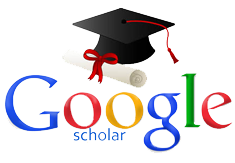Pengaruh Strategi Pembelajaran Word Sqaure Berbantuan Media Gambar terhadap Hasil Belajar IPS Kelas V SD
DOI:
https://doi.org/10.31004/jpdk.v4i6.9600Abstract
Penelitian ini bertujuan untuk mengetahui pengaruh strategi pembelajaran word square berbantuan media gambar terhadap hasil belajar IPS kelas V SD Negeri 1 Pampangan. Penelitian ini adalah jenis penelitian Quasi Eksperimen dengan desain postest only control grup Design. Populasi dalam penelitian ini adalah seluruh siswa kelas V A dan V B SD Negeri 1 Pampangan yang berjumlah 52 siswa. Sampel dalam penelitian ini menggunakan teknik sampling total yaitu teknik pengambilan sampel dimana seluruh anggota populasi dijadikan sampel semua. Sampel dalam penelitian ini terbagi menjadi dua kelompok, yaitu kelompok eksperimen dan kelompok kontrol dimana kelompok eksperimen berjumlah 26 siswa dan kelompok kontrol berjumlah 26 siswa. Instrumen yang digunakan dalam penelitian ini adalah observasi, tes dan dokumentasi. Teknik analisis data dalam penelitian ini menggunakan indentpenden sampel t-test.Taraf signifikan dalam penelitian ini adalah 0,05 atau taraf kepercayaannya 95%. Kelas eksperimen yang diberikan perlakuan dengan strategi pembelajaran word square berbantuan media gambar memperoleh rata-rata jumlah posttest 83,88462. Dan kelas kontrol posttest berjumlah 78,42308. Hasil uji T dengan ttabel 1.278 diperoleh thitung 4.475 dapat disimpulkan bahwa thitung > ttabel yang artinya terdapat pengaruh yang signifikan terhadap penggunaan strategi pembelajaran word square berbantuan media gambar terhadap hasil belajar IPS kelas V SD Negeri 1 Pampangan.Downloads
Published
2022-12-01
How to Cite
Trijulianti, E. ., Dedy, A. ., & Nurhasana, P. D. . (2022). Pengaruh Strategi Pembelajaran Word Sqaure Berbantuan Media Gambar terhadap Hasil Belajar IPS Kelas V SD. Jurnal Pendidikan Dan Konseling (JPDK), 4(6), 7814–7819. https://doi.org/10.31004/jpdk.v4i6.9600
Issue
Section
Articles
License
Copyright (c) 2022 Ega Trijulianti, Adrianus Dedy, Putri Dewi Nurhasana

This work is licensed under a Creative Commons Attribution-ShareAlike 4.0 International License.
Authors retain copyright and grant the journal right of first publication with the work simultaneously licensed under a Creative Commons Attribution-ShareAlike 4.0 International License that allows others to share the work with an acknowledgement of the works authorship and initial publication in this journal. Authors are able to enter into separate, additional contractual arrangements for the non-exclusive distribution of the journals published version of the work (e.g., post it to an institutional repository or publish it in a book), with an acknowledgement of its initial publication in this journal. Authors are permitted and encouraged to post their work online (e.g., in institutional repositories or on their website) prior to and during the submission process, as it can lead to productive exchanges, as well as earlier and greater citation of published work (See The Effect of Open Access).
.png)













